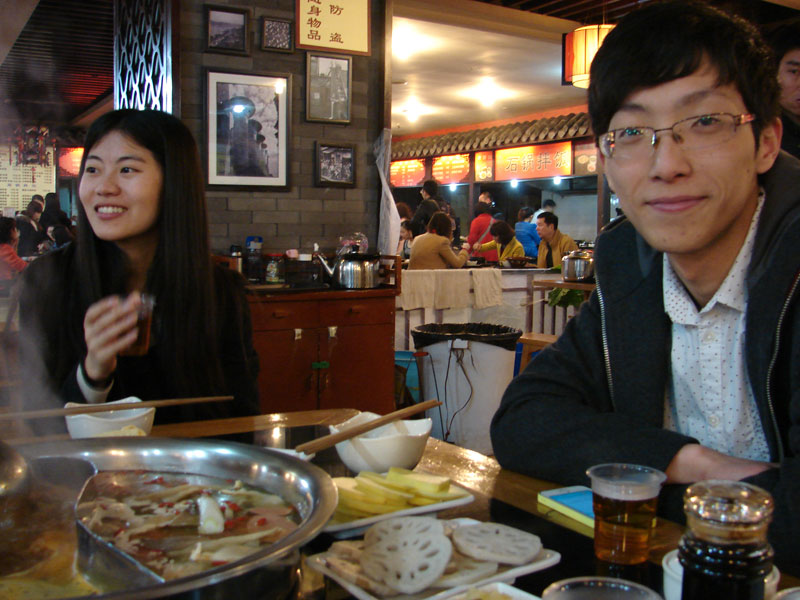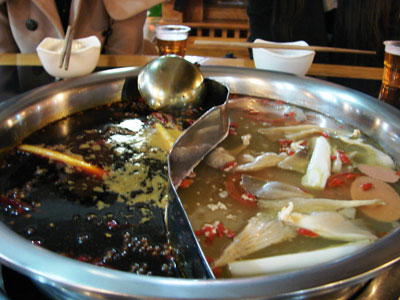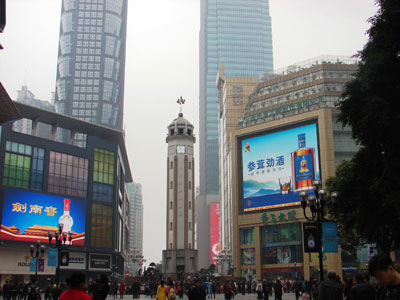What's Cooking In... China
This item appears on page 53 of the January 2015 issue.
One of the sources I check when I’m researching a destination is Global Greeter Network (www.globalgreeternetwork.info).
Available in nearly two dozen countries, Greeters are volunteers who each give free 2-hour tours of their city, taking visitors to parks and lesser-known neighborhoods or shopping. Greeters are not professional guides, so they do not take their guests to museums.
My husband, John, and I signed up several weeks in advance to take a Greeter tour in the municipality of Chongqing, located in southeastern-central China, in March 2014. We wanted to learn about hot pot. A signature dish of Sichuan Province, hot pot is thought to have originated in Mongolia 1,000 years ago.
Our guides, college students proficient in English, met John and me in the lobby of our hotel, the InterContinental, located on a pedestrian-only street lined with high-end shops. (Though we had three Greeters, usually there is only one; we think the other students came along just to see how it works. Tipping is not required or even recommended, but on our tour we bought our guides lunch).
Our Greeters led us to the main stop on our tour, a traditional food court on the lower level of a mall a 5-minute walk away. Among a wide variety of food was grilled corn, dim sum and hot pot.
In the hot pot area, a table had a recessed spot in the middle in which the hot pot rested. The hot pot, itself, had a divider, with spicy broth on one side and mild broth on the other — the yin and yang of hot pot.
The menu of items to cook in the hot pot was in Chinese, so Nick, one of our guides, ordered for us. We preferred vegetables, while Nick preferred organ meats.
Luckily, with hot pot, everyone gets to eat what they like because the uncooked items are served on a plate and diners dunk them into the preferred broth to cook as desired. Wooden chopsticks work best for selecting items, placing them in the simmering broth and either holding them there briefly until ready or retrieving the items after leaving them to cook longer.
One of the things I like about eating hot pot is that sharing the plated food and broths is a very socially interactive way of dining.
John and I learned how to eat hot pot in the city, but it was not until we were on board the 408-passenger, Yangtze River cruise ship Century Legend of Century Cruises (5FL Wanda Plaza Business Mansion 1, No.8, Jiangnan Avenue, Nan’an District, 400060, Chongking, P.R. China; phone 86 23 6232 8976, email sales@centuryrivercruises.com or visit www.centuryriver cruises.com [for English, see flag at top far right]) that we learned how to prepare hot pot. Just one of the activities offered on board, the cooking demonstration was free to all passengers.
(After having visited the line’s website, I contacted Century Cruises directly by email to book a cabin. English was widely spoken on the ship as well as in the hotel.)
Hot pot is easy to make and — from mildly flavored to tongue-numbingly hot — can be created to please anyone’s palate. Divided electric hot pots are available, but, in lieu of that, consider using a fondue pot or a crock-pot.
Sandra Scott can be reached by email at sanscott@gmail.com.



